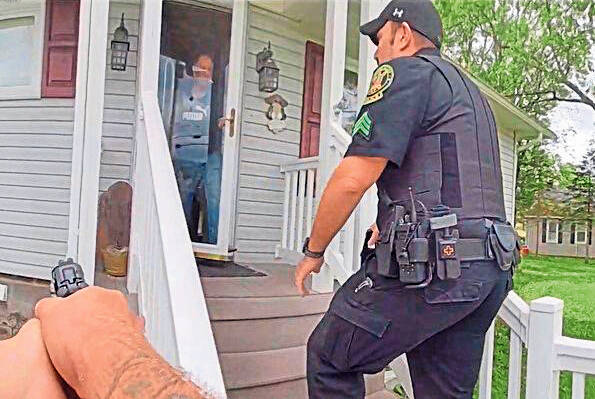Editorial: Police need right support to deal with mental health calls
Robbie Thomas Saunders, 59, was shot and killed July 2 by a Ligonier Valley police officer.
Westmoreland County District Attorney Nicole Ziccarelli announced July 21 that the use of deadly force was justified. That was bolstered when police released the body camera footage, which showed Saunders coming out of his Ligonier Township home wielding a machete.
But that doesn’t mean there couldn’t have been other steps taken. The video does more than show what steps officers Ryan Hall and James Friscarella took. It speaks to the frequent clash of law enforcement and mental health.
Saunders’ son previously confirmed drug abuse and mental health issues with his father, including prior arrest during a psychotic break.
In the video, arriving officers spoke with a woman who said Saunders “woke up crazy.” Police asked if anyone else was in the house with him. She said no. Did he have a knife? She said yes.
Attorney Dennis Rudovsky of Philadelphia law firm Kairys, Rudovsky, Messing & Feinberg teaches constitutional criminal procedure, criminal law and evidence at the University of Pennsylvania School of Law. An expert in police use of force, he reviewed the footage.
He found no fault with the three seconds where a tense situation flashed over into death. Saunders charged out, machete held high. Friscarella used a stun gun, while almost simultaneously, Hall fired his service weapon.
But the 20 seconds between the brief conversation with the woman and when Saunders came out of the house were where things could have gone differently.
“There’s nobody else in the house, so he can’t harm anyone. So why (immediately approach) the front door? Why not call or have a negotiator come in to talk with him? You have the time,” Rodovsky said.
This might seem like a criticism of the police. It isn’t. A potentially threatening man with a weapon is definitely a reason to call in law enforcement. However, once it is known to be a mental health situation, having the correct support for police saves them from becoming mired in situations where they aren’t the best first response.
Calling for that support isn’t a failing. It’s appropriate crisis management. It is no different from calling an ambulance if police determine someone is physically injured or calling for fire fighters if they realize a car crash demands it. Use the right tool for the right occasion.
According to the National Alliance on Mental Illness, 25% of people fatally shot by police have a mental health diagnosis. Involving appropriate agencies in these calls could change that.
It could also protect police, like McKeesport Officer Sean Sluganski who was killed in February. The incident occurred when Johnathan Morris’ mother called 911, reporting her veteran son having a PTSD episode.
Then, there is the emotional weight officers can carry after pulling the trigger.
Gun violence arguments often devolve to questions of whether problems are an issue of violence or mental health. A measured look at the evidence can see both — sometimes simultaneously. Changing the response could be key to changing outcomes.
Editor’s note: A previous version of this story transposed Friscarella and Hall’s names in refrence to the shooting.
Remove the ads from your TribLIVE reading experience but still support the journalists who create the content with TribLIVE Ad-Free.

